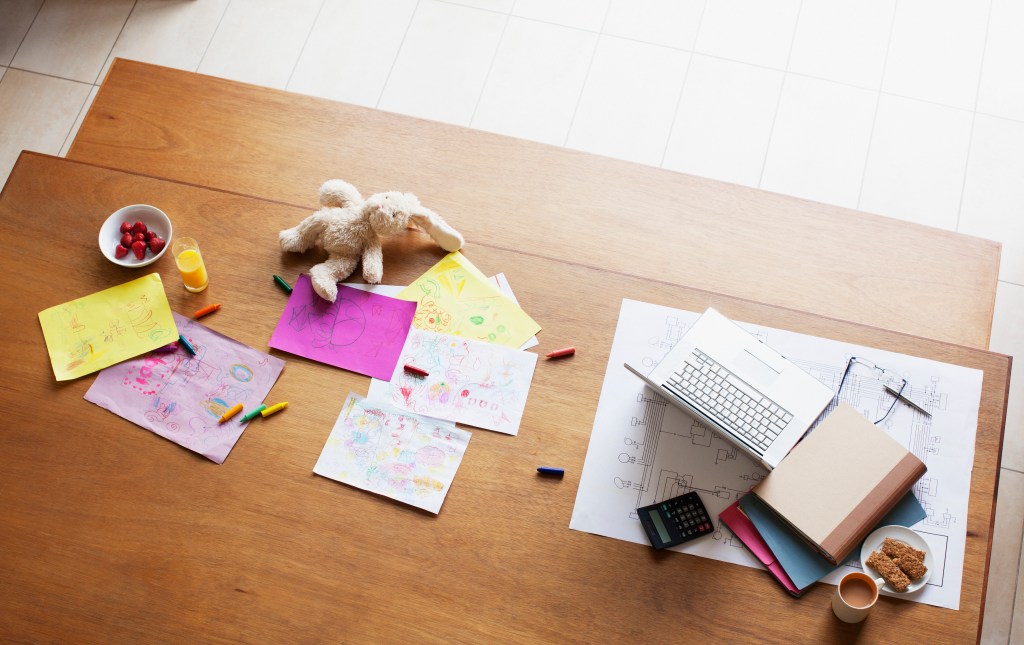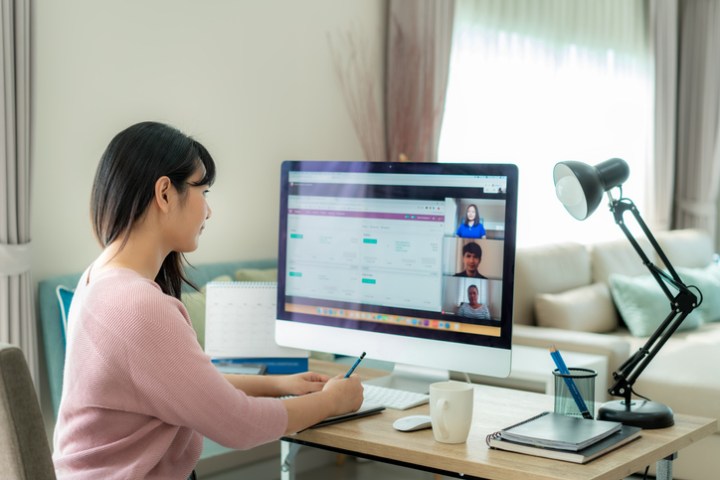How to navigate work and family distractions during lockdown

While studies have shown that working from home can improve performance by 13–22 percent by reducing the noise, I suspect those houses were pretty quiet. Today, as we sit in our confinement, we are trying to work in an environment that has become an office for multiple companies, a school classroom and a playground, all at the same time. A steady flow of digital distractions encourage us to touch our phones 2,500 a day; and our anxiety levels bubble with the news of the escalating pandemic. It’s a more perfect storm for distraction than any time in history. So how might we respond; how might we surf this tsunami of noise?
-
Switch Less
The average office worker shifts attention every three minutes. At present, in households with children, I suspect that time period might be even shorter. Each time we move between tasks, the brain takes a little time and energy to reorientate itself to the new task. This is called the switch cost. University of Michigan professor David Meyer has found the impact of this is a 40 percent reduction in our productivity, it is also exhausting.
Big-chunking
Your work will be better, your conversations richer and your days less stressful if you big-chunk your day. Trying to simultaneously perform our job, teach our children and run the home at the same time means intense levels of task switching. The basic principle of big-chunking is clustering similar activities together. It’s much less demanding to switch within the same domain of tasks: it’s easier to switch back and forth between household chores than it is to switch between chores and contract writing.
Of course, perfect chunking is impossible. The point is that any small increases in the way we cluster our activities, and decrease our shifts between domains, will help.
-
Avoiding distractions (those you can!)
How often do you switch tasks? Whatever the frequency you just guessed, I would wager you are underestimating it. A study published in the journal Cyberpsychology, Behaviour, and Social Networking, found that people underestimated their frequency of distraction by a factor of ten. Our rate of task switching is worrying since professor of informatics at University of California, Gloria Mark, found that workers took an average of twenty-three minutes to recover from interruptions and return to their original task.
Some distractions are unavoidable, after all there is a certain urgency to superhero capes. However, Mark found that 44 percent of distractions in offices are self-induced. Packing the dishwasher suddenly becomes alluring when the alternative is to start drafting that annual report. No matter how many distractions are unavoidable, a lot of the hopscotching isn’t driven by necessity. It’s because, in the present moment, the simple and immediate is more attractive than the complex and longer-term activity.
Strong willpower
In studies of self- control, researchers found something interesting. Those with strong willpower were no better at resisting temptation when it stared them in the face, they just had better habits. If you want to be more focused, switch off your notifications on your computer and phone; set up your working space so you are not distracted by how messy your house is, or able to see the children’s TV show.
It drives me crazy how many people know about turning off notifications or avoiding distractions, yet don’t! If you haven’t switched off your notifications, either you think your willpower is strong enough (you’re wrong) or you are accepting the distraction.
-
Embrace distraction!
I have been fortunate to work with Berthold Gunster, the hilariously innovative Dutch creativity guru. He developed the idea of Omdenken – flip-thinking. The central premise is simple but brilliant: turn your thinking about issues upside down. Instead of seeing problems, see them as opportunities for creativity. In his words, “When you let go of what should be, you open the door to what could be.” Instead of focusing on your wish that the children could be less distracting, how about embracing it?
To make my point, I’ve flipped my own thinking on distractions. What would it mean, instead, to embrace distractions and turn our distractions into opportunities for some fun, for some creativity and for some special moments with your children? Here’s a couple of ideas I’ve come up with:
The Attention Alligator
Your children will need your help and attention through the day, and this will not always be at convenient times. That’s just life. However, you can reduce the disruption of these distractions, and make the subsequent conversations better, by delaying them. You can do this by choosing a children’s toy. Let’s say an old cuddly alligator. You explain to the children that this is the Attention Alligator. If anyone wants attention from anyone else while they are working – on schoolwork or paid work – they place the Attention Alligator on that person’s table, without saying a word, and walk away. The receiver of the alligator then has a few minutes to finish what they were doing and switch their attention more gracefully. In return, they take the Attention Alligator back to the giver and give them joyful and undivided attention.
‘Attention Time’
Find an old box and ask the children to decorate it. This will be the family’s Attention Box. Next to the box, leave some slips of paper and coloured pens. Whenever children have a question, they write it on a slip of paper, or draw a picture. In doing so, they don’t distract you and allow you to focus. Every hour (or thirty minutes) you take a break from work, and make a big show of opening the box, answering the questions and showering the children with the attention they want. This shouldn’t be one-way either. You should also write your own requests or questions and post them in the box, and revel in the attention of your children too.
These exact ideas may not work for you, but with a little imagination, there are things we can do to transform distractions into opportunities for quality attention, and maybe have some fun at the same time. Thanks Berthold!
This is an adapted extract from Tony Crabbe’s Busy@Home: How to thrive through the covid crisis.
An essential toolkit for life and work during lockdown - and beyond
You've stockpiled enough baked beans and toilet roll to last for 6 months. Now what do you do?
As you shut the door on the world, you try to keep a lid on your anxiety. Work is going crazy, as the business world is turned upside down. You rush between keeping your boss happy, your children schooled and everyone fed. Despite endless cleaning, the house remains resolutely chaotic. Your thoughts pirouette in worry over health, loved ones and finances. As the day spins away from you, you ask yourself 'How will I get through this period?'... and that´s exactly the wrong question to ask.
In BUSY@HOME, business psychologist Tony Crabbe, explains that when we aim higher than 'getting through', we perform better, enjoy ourselves more and have more resilience. This deeply practical guide, based on extensive psychological research, will help you and your family navigate this unsettling and pressurized time. BUSY@HOME also reveals how to use the disruption of our routines, habits and endless busyness as a once-in-a-lifetime opportunity for a reset.
This is not a book about surviving covid confinement; it´s about thriving through this crisis, and building more bounce into your life beyond.








